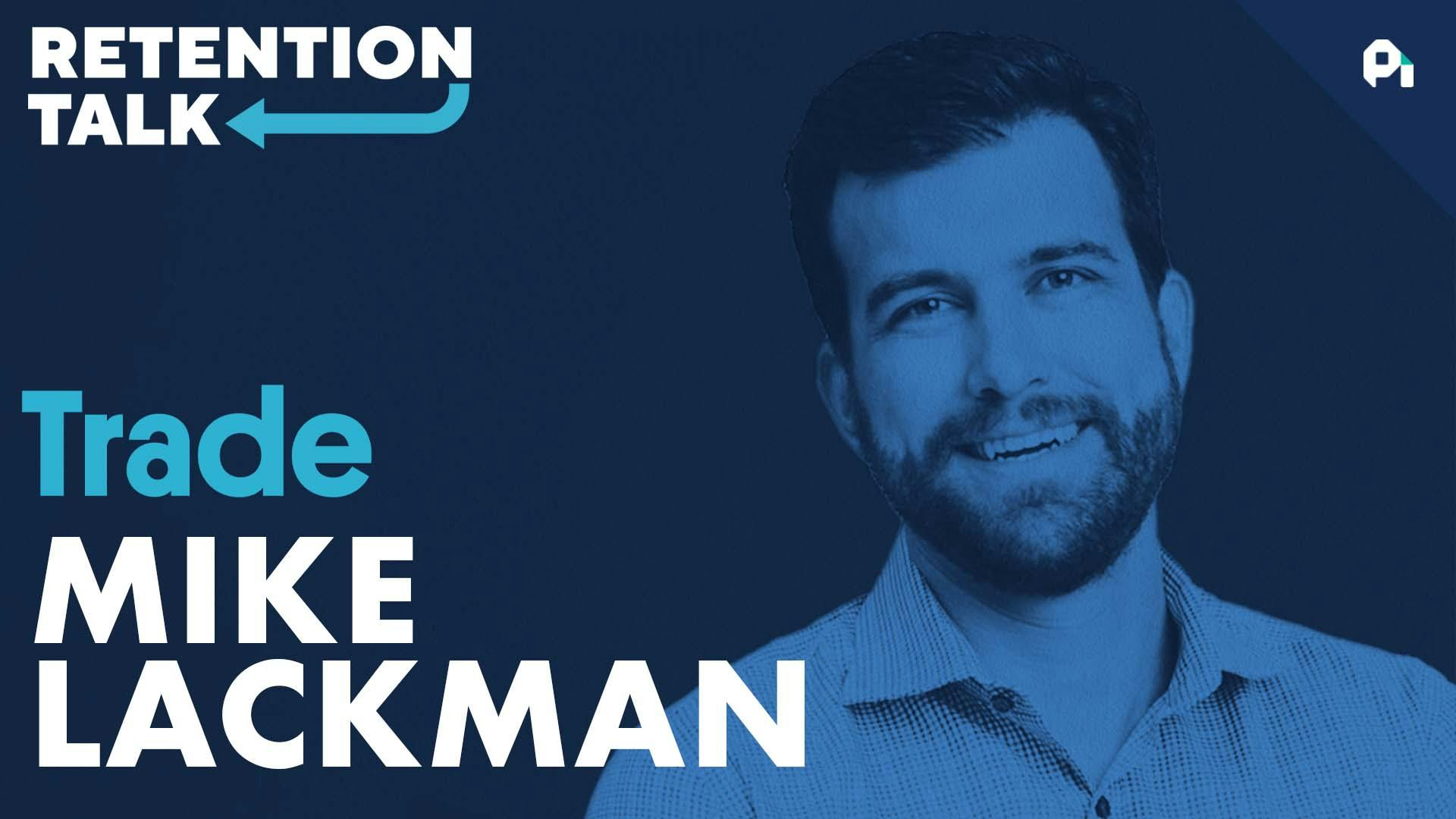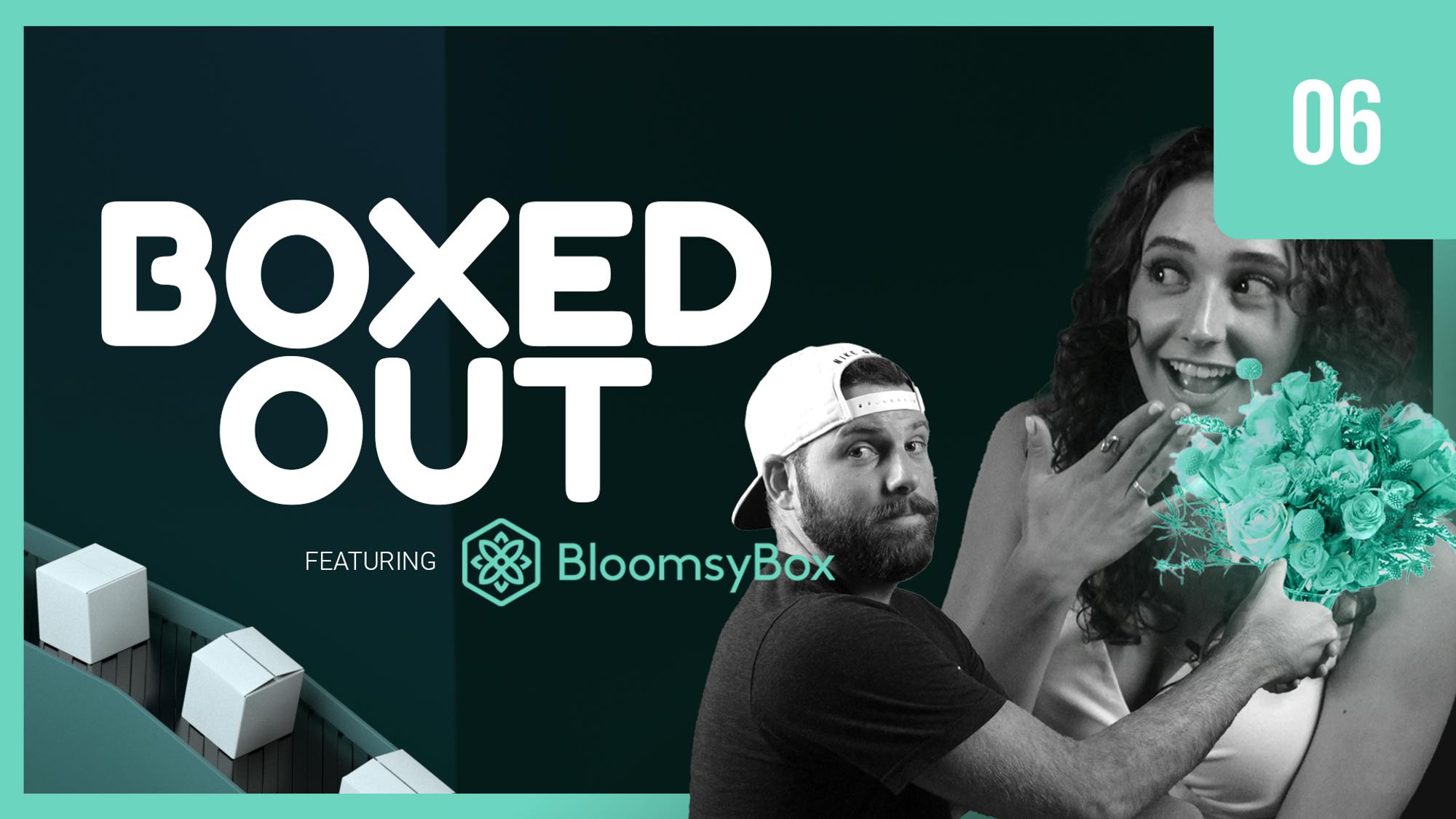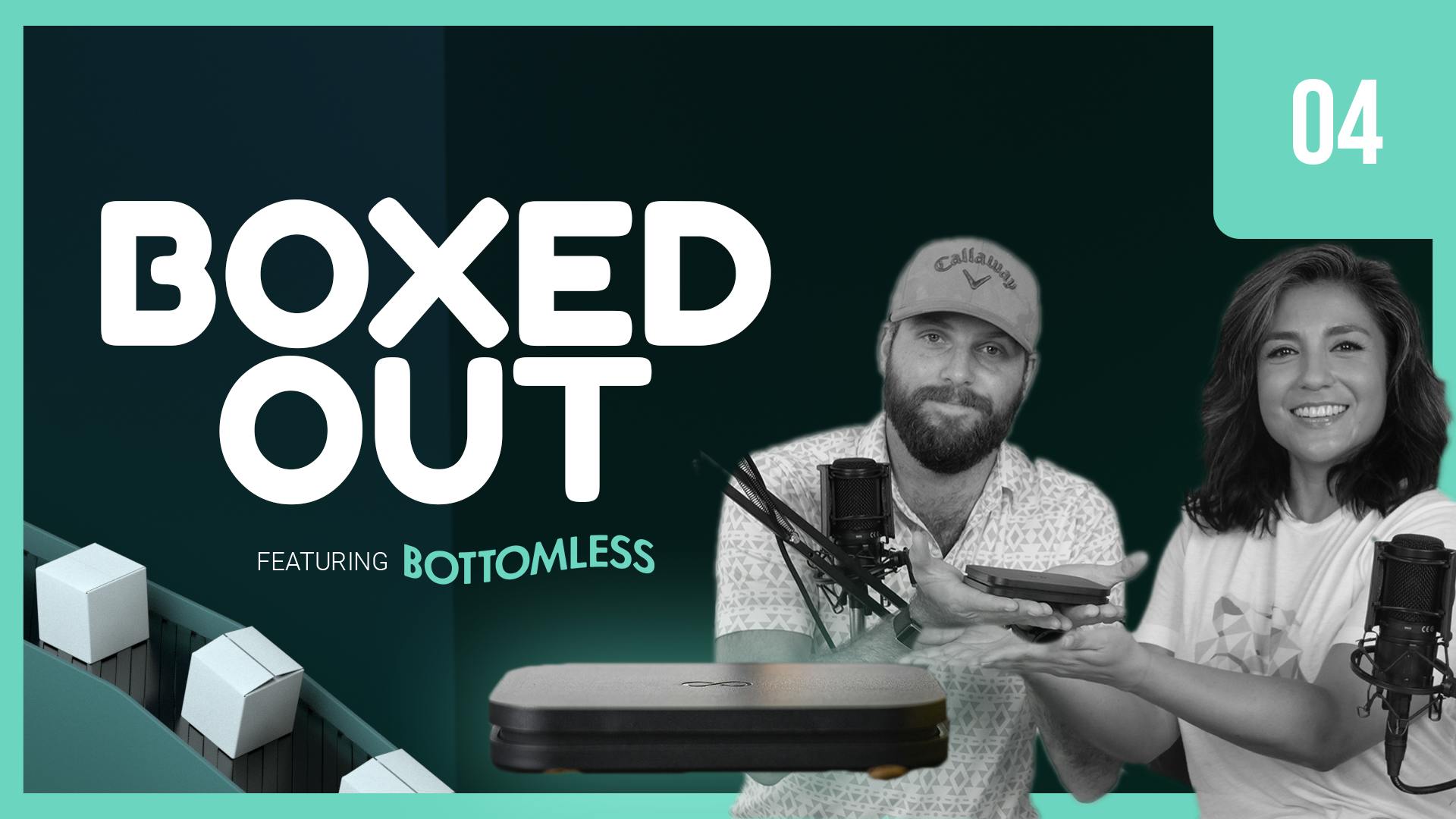
5 Key Strategies for User Retention
This episode might reference ProfitWell and ProfitWell Recur, which following the acquisition by Paddle is now Paddle Studios. Some information may be out of date.
Please message us at studios@paddle.com if you have any questions or comments!
We wanted to kick the new year off on the right foot, so this week on Retention Talk we’re going over the five key components of customer retention that we've learned from the season so far. We’ll be back next week with a brand new episode with Mike Lackman of Trade Coffee.
Key points discussed in the episode
1. Having an outcome-focused product roadmap
First we look back at our first episode with Oscar Carlsson of Framer. His advice was to have an outcome-focused product roadmap.
Rather than worry about different features and capabilities, Framer aligned on segmenting their buyer personas and the outcomes they were working toward.
This led to a laser focus for the entire company to radically shift—not only the distribution channel, but their product itself.
2. Breaking down customer cohorts
Next we look at our episode with the crew over at Knowledgehook. They advise breaking down customer cohorts for analysis.
At Knowledgehook there are three key personas: the end user who uses the tool, the economic buyer who pays for it, and the technical decision maker. To help with pushing deals forward, they have individual storyboards for each.
Additionally, they have story cards for each team on customer success, so they know the journey for teachers and district leaders.
These storyboards and cards are helpful, but only illuminate what’s on the surface. They still double click into individuals to understand common bottlenecks in the customer experience.
3. Retention starts with onboarding
Next, Romain Pouillon of Beatport told us that retention starts with onboarding. Before retaining a customer, you have to instill the value that your product provides.
At first, retention will seem to be all over the map, but this is no cause to panic. Over time as you improve your product and match it to the needs of your customers, numbers will naturally start to normalize.
The best thing you can do upfront is shore up your onboarding. Check in with your team weekly and ensure that your tweaks, large or small, are affecting the numbers you are tracking.
4. Letting certain customers churn
Let’s take it back to our episode with Oscar Carlsson. Though it sounds counterintuitive, letting certain customers go is a good thing.
You want to focus your efforts and resources on those customers that are going to provide a higher lifetime value.
5. Have a cross-functional approach
And last, let’s look at our conversation with Kelly Danahy of CompanyCam. Kelly advised having a cross-functional approach, instead of leaving things up to customer success.
Aligning your retention strategy across sales, marketing, and even product, gives CompanyCam a holistic approach to ensuring customers succeed.
Do us a favor?
Part of the way we measure success is by seeing if our content is shareable. If you got value from this episode and write up, we'd appreciate a share on Twitter or LinkedIn.
Welcome to retention talk. I'm Neil Esai, and we're talking to the best minds in the world of product and customer success to bring you actionable strategies on reducing churn and boosting retention. Hey everyone, Neil here hoping your new year is off to a terrific start this week on retention talk.
We're going over five of the best pieces of retention advice from the season so far. We'll be back next week with a brand new episode from Mike at Trade Coffee. But without further ado, let's dove in. first, we look back at our first episode with Oscar of Framer.
His advice was to have an outcome focused product roadmap rather than worry about different features and capabilities. Oscar described how the entire company was aligned about segmenting their buyer personas and the outcomes that they were working towards. This led to a laser focus for the entire company to radically shift not only the distribution channel, but the product
itself. Now that we're on the web and we've done all of these big fundamental changes that we can do, we're trying to look for the next big things in finding retention, and we can fix these fundamental changes anymore.
So now we're looking more and more into being a more customer focused. So how can we figure out what the big themes and about the big things that our customers want to make in the product? So we're in the creative space, meaning that the outcome and the way that you could use our product is very flexible and
it differs from customer to customer. So there's no one way of using frame or there's multiple. So figuring out how to build a product roadmap and how to kind of like rank the importance of these different things into retention is what we're focusing on right now.
And I feel like we were getting into a good framework where we talk about customer use cases and we try to rank them through different means. So we have the enterprise teams giving us input on what our big enterprise customers want.
We have a public way of giving feedback on the product roadmap in using a tool called Kanae, and we're also internally looking at data. So we're trying to triangulate using all of these free into figuring out which of the use cases are most likely to move the retention numbers.
And when I talk use cases, I mean big outcomes that a user can do using the tools. They're not talking about specific features, but outcomes that they can do. Next up, we look at our episode with the crew over at Knowledge Hook.
They advise to break down customer records. Knowledge Hook. There are three key people. There is the end user who actually uses the tool, the economic buyer and the technical decision maker. They have assigned individual storyboards for each of these, which will help with pushing deals forward.
Additionally, they have created story cards for each team on customer success so that they know the journey for teachers and district leaders. These storyboards and cards are helpful, but only illuminate what's on the surface. They still double click into individuals to understand common bottlenecks in the customer experience.
We have two things we have internal tools. A lot of this is all vertically integrated. But what we start off before the data when we start off is with our storyboards around our key stakeholders in B2B sales. As you know, in district is very similar to district sales.
You have three people, you have the end user who ends up using the tool that your organization procures and you have the economic buyer and the technical decision maker. So we have these detailed storyboards of what is their journey and the journey is not just about their journey through knowledge, but their journey in general.
What are their peaks and those in their experiences? What are the problems that they're facing? And then through that storyboard, their enters knowledge. You get certain parts of the journey and this is not just the journey of the product, but their buyer's journey as well.
We are very, very I don't know what the right word is, but obsessed around like understanding that journey. We have story cards that we've created, especially during remote culture that were shipping out. But each team on customer success knows the journey for teachers, for district leaders.
And then from there, and what we're tracking is in terms of data, it's like, what are some of the metrics that we have because a lot of our tools are online, a lot of these experiences, a lot of it's trackable for each of these touchpoints, the knowledge it plays a role in their journey, you know, especially the
online touchpoints. Obviously, there's there's offline parts that are captured in these storyboards, but the online parts, we have cohort data points so we can see, you know, where there might be a conversion issue, where there might be a bottleneck.
And we have also rituals once we have that data. Once you see the bottlenecks, a lot of the teams just sort of work together to try to double click in there and really, really see if there's something about the experience.
And often it's always the same suspects, right? We either didn't understand what was going on in the customer's head in that part of the journey, and we were too preoccupied with, like us trying to achieve a certain outcome.
And so when you double click, you can see either like something that needs to be upgraded to sort of honor the journey of the customer. And as Chad said, like, what value are we demonstrating at this stage to make it as frictionless as possible?
And we used data that way, and we find that it's been helpful next. Roman, over at Beatport, told us that retention starts with onboarding before retaining a customer, you have to instill the value that your product provides at first.
Retention will seem all over the map, but this is no cause to panic over time as you improve your product and connect the dots to the needs of your customers. Numbers will naturally start to normalize. The best thing you can do upfront is to ensure that your onboarding is in a good place.
Check. With your team weekly and ensure that the tweaks large or small are affecting the numbers you are tracking. I would say that before it retaining customer, the most important is to onboarding them and to get the maximum of them into your subscription plan or your subscription model.
Because what we have seen is by supplying the platform, by having a web of which is super accessible, we on both the whim, more people, of course, some of them which churn because of the, as you said, the volatility of the product.
We are also addressing a really young demographic which people between 20 and 30 years old, so they might go on on also depending on their income. They don't have yet a certain income. So I think before going into full retention mode, the first things you have to solve it to involve the maximum of users.
And then for us, since we have onboarded so many users, we could focus on on retention and optimize the retention side of things. So I wouldn't freak out too much at the beginning. If you have a lot of churn rate because over time it's going to improve as you make your product corresponding to the needs of your
customer. So I would rather put it on the product side and understanding your customer needs. And then in terms of retention, I think you learn and everybody's learning with a subscription model over time how to retain your customer.
That's something which is really important is to on a weekly basis, look at what's going on, at least on a weekly basis. I think it has been key for us than ever looking at the monthly this or quarter basis.
Just just check constantly your product to see the small action you are doing riots and small promotion. For example, we tested sending a newsletter which is highlight your stats, your personal thoughts. So for example, all you used to in 1000 song is stream twelve hours of music and you listen to $24 out of your allotted to join
us. Those kind of things you can when you launch that. If you look at the weekly basis, you can see if it has an impact on your retention, so it's important to constantly look at it. Let's take it back to her episode with Oscar.
He had great advice about customer churn, though it sounds counterintuitive. Letting certain customers go is actually a good thing. You want to focus your efforts and resources on these customers that are actually going to provide higher lifetime value.
We did this by fundamental looking at what do we think, which use cases and what problems for the customers, do we think we're best lined up to solve? And sadly, during this period of time, there's been a few hard discussions where we've had to let some of the bigger enterprise customers and some of the customers that were
bought into something that we didn't think that we could solve. We had to let them share and basically and pare down on the ones with the promised future that we would be able to attract more customers and who would be able to solve the need that they had in a better way.
Lastly, let's look at our conversation with Kelly at company Cam. Kelly advised to have a cross-functional approach above everything else. Connecting different teams and having a cross-functional approach is crucial to retention, and it shouldn't just be customer success.
Aligning everyone from sales, marketing and even product gives company care and a holistic approach to making sure customers succeed. one thing that we really do and everybody should do is we have like cross-functional teams, right? And one of them we call it like an activation or retention team so that they really just focus on, like, you know
, retention. So it's not just customer success sitting in that meeting, it's our marketing team. Product person might go to that meeting occasionally. And really what they're doing is strategizing around ways that we can get in front of retention.
So we have those meetings, like it's almost like, you know, we have a typical org chart at company can where you know you're you're in sales, you're in marketing or whatever. But a lot of people's like identities at the company are these teams like This is my job.
My job is to collaborate with this team and to make retention better, although they may like functionally be managed by somebody else. So we've started doing that maybe a year ago. We have been doing it that long, but we've been noticing a lot of good success by doing that and really working like cross-departmental with our teams on
retention specifically. Thanks for listening to this week's episode of Retention Talk. Don't forget to subscribe at retention tocome, and if you want to help spread the word, tag me on Twitter and you'll decide 23. And let's dish out today's episode.
Please give us a five star review on the podcast platform of your choice and let your friends know as well and always. If you have any questions at all, send an email to at provocar. This has been a profitable record production the largest, fastest growing media network dedicated to the world of subscriptions.






